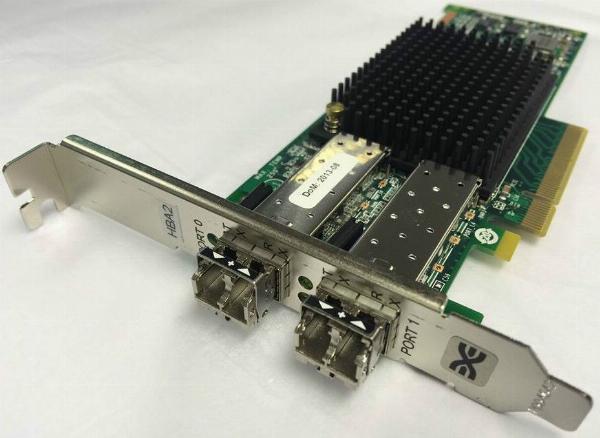Understanding HBAs Their Role in Data Connectivity and Storage Solutions

Strong 8k brings an ultra-HD IPTV experience to your living room and your pocket.
Fibre Channel HBAs Market Outlook
The global fibre channel HBAs market, valued at US$ 5 billion at the end of 2022, is projected to soar to US$ 18 billion by 2032, registering a CAGR of 12.5% over the forecast period from 2022 to 2032.
Currently, fibre channel HBAs market account for approximately 35% of the global fibre channel adapter market. Network connectivity is indispensable for businesses, especially with the rising adoption of data centers. Fibre channel HBAs are extensively used in commercial data centers due to their ability to utilize peripheral component connectivity slots on the servers within a storage area network (SAN). Well-known vendors offer various types of fibre channel HBAs, including single port, double port, and quad port models. These HBAs play a crucial role in data transfer within data centers and computer servers, significantly driving market growth. From 2017 to 2021, the fibre channel HBAs market grew at a rate of 10.2%.
The increasing demand for server disk storage capacity and enhanced storage performance is propelling the need for storage area networks and related fibre channel interconnectivity solutions. Fibre channel technology is highly preferred for high-end storage solutions, particularly for external server storage connectivity.
Host Bus Adapters (HBAs) play a crucial role in data connectivity and storage solutions, facilitating efficient communication between servers or computing devices and storage networks. Here’s an overview of their significance and functionality:
1. Interface between Servers and Storage Networks:
Role: HBAs serve as interface cards or adapters that connect servers, workstations, or other computing devices to storage networks, such as Fibre Channel (FC) SANs (Storage Area Networks) or iSCSI (Internet Small Computer System Interface) storage.
Function: They manage data transmission between the server’s internal bus (PCIe, PCI-X, etc.) and the external storage network, ensuring seamless connectivity and efficient data exchange.
2. Enabling High-Speed Data Transfer:
Role: HBAs are designed to support high-speed data transfer rates, optimizing performance and reducing latency in storage environments.
Function: They enable rapid data transmission between servers and storage devices, supporting bandwidth-intensive applications, real-time data analytics, and large-scale data processing tasks.
3. Compatibility with Storage Protocols:
Role: HBAs support various storage protocols, including Fibre Channel, iSCSI, SAS (Serial Attached SCSI), and NVMe (Non-Volatile Memory Express).
Function: They ensure compatibility with different storage architectures and protocols, allowing organizations to deploy flexible and scalable storage solutions tailored to their specific performance and capacity requirements.
4. Enhancing Storage Management and Efficiency:
Role: HBAs contribute to efficient storage management and resource utilization in data centers or enterprise IT infrastructures.
Function: They facilitate centralized management of storage resources, enable storage virtualization, and support features like RAID (Redundant Array of Independent Disks) for data protection and redundancy, optimizing storage efficiency and operational continuity.
5. Supporting Storage Area Network (SAN) Deployments:
Role: In SAN environments, HBAs act as essential components for connecting servers to shared storage pools over dedicated high-speed networks.
Function: They enable SAN connectivity, facilitating seamless access to consolidated storage resources, data replication, and disaster recovery solutions. HBAs ensure reliability, scalability, and performance in mission-critical storage infrastructures.
6. Integrating Advanced Features for Security and Reliability:
Role: Modern HBAs integrate advanced features such as data encryption, secure boot, and error detection/correction mechanisms.
Function: These features enhance data security, protect against unauthorized access or data breaches, and ensure data integrity during transmission and storage. HBAs support compliance with regulatory requirements and industry standards, fostering trust and reliability in storage connectivity solutions.
7. Evolving Role in Cloud and Virtualized Environments:
Role: HBAs adapt to evolving IT architectures, including cloud-based deployments and virtualized data centers.
Function: They support virtual machine (VM) migrations, storage provisioning in virtualized environments, and integration with cloud storage services. HBAs facilitate flexible, scalable, and efficient storage solutions aligned with modern IT infrastructure requirements.
Conclusion:
Host Bus Adapters (HBAs) are integral components in data connectivity and storage solutions, bridging the gap between servers and storage networks while ensuring high-speed data transfer, compatibility with diverse storage protocols, efficient storage management, and robust security features. Their role continues to evolve with technological advancements, supporting the scalability, reliability, and performance of storage infrastructures in increasingly dynamic and data-driven environments.
Note: IndiBlogHub features both user-submitted and editorial content. We do not verify third-party contributions. Read our Disclaimer and Privacy Policyfor details.







